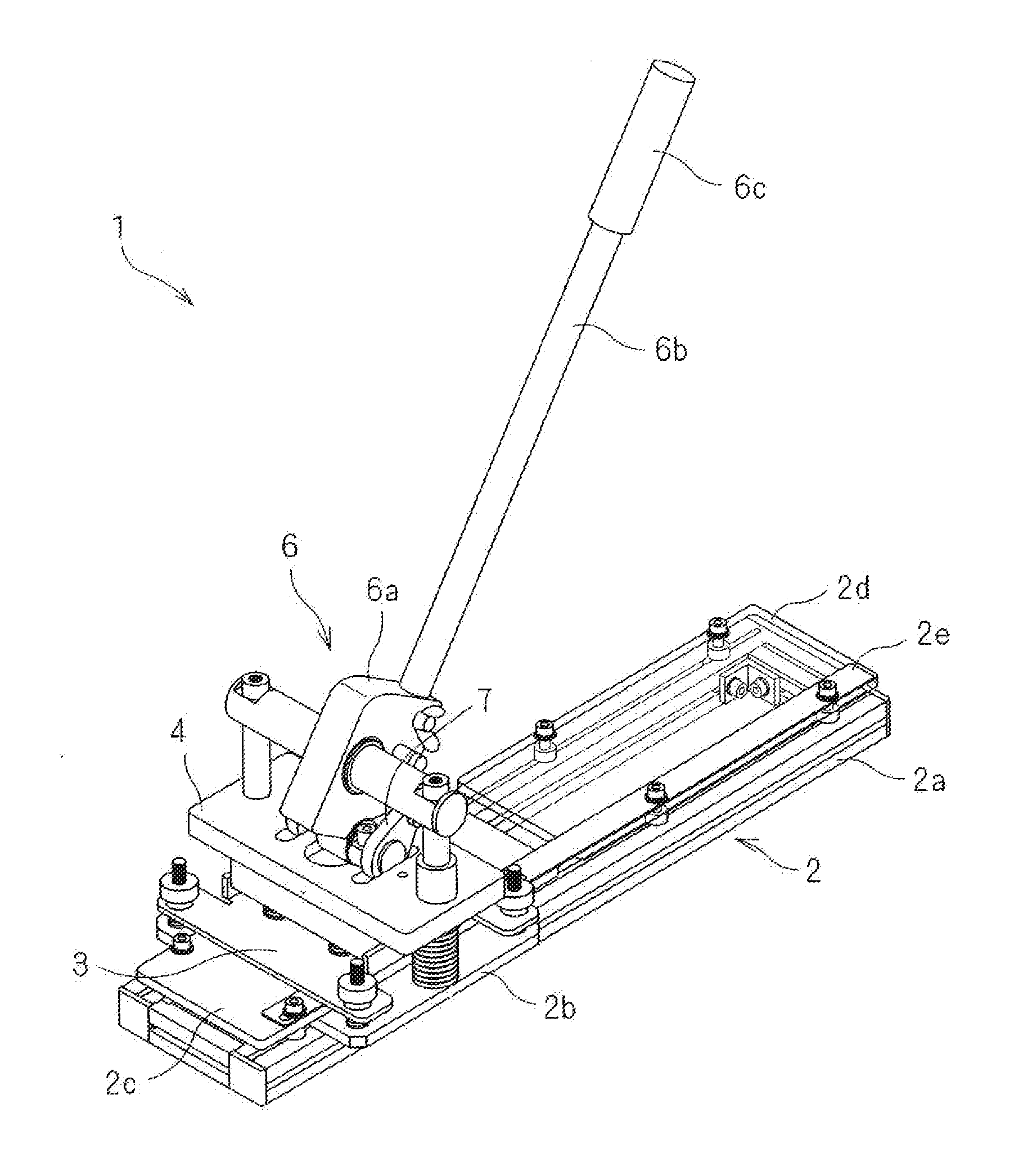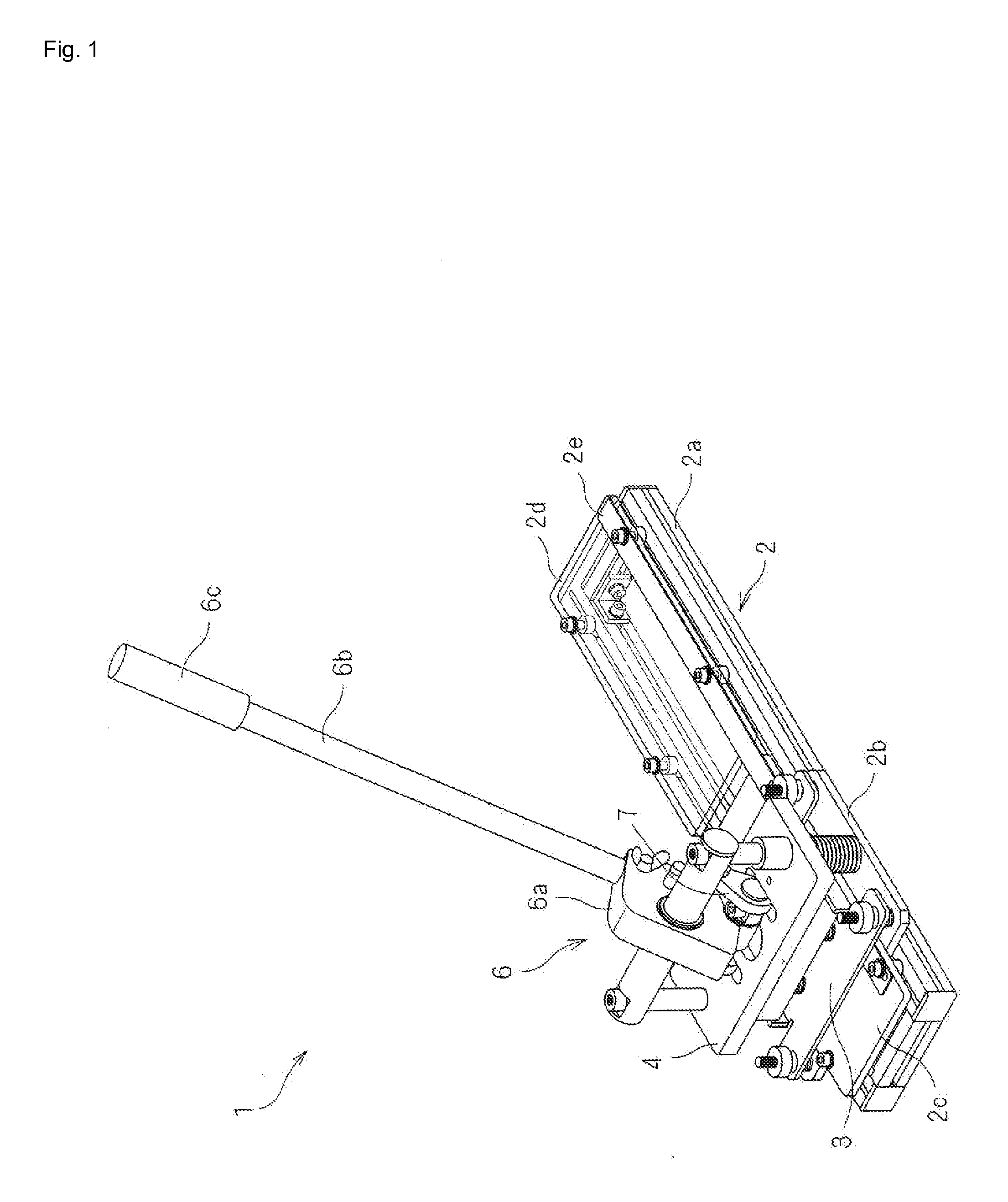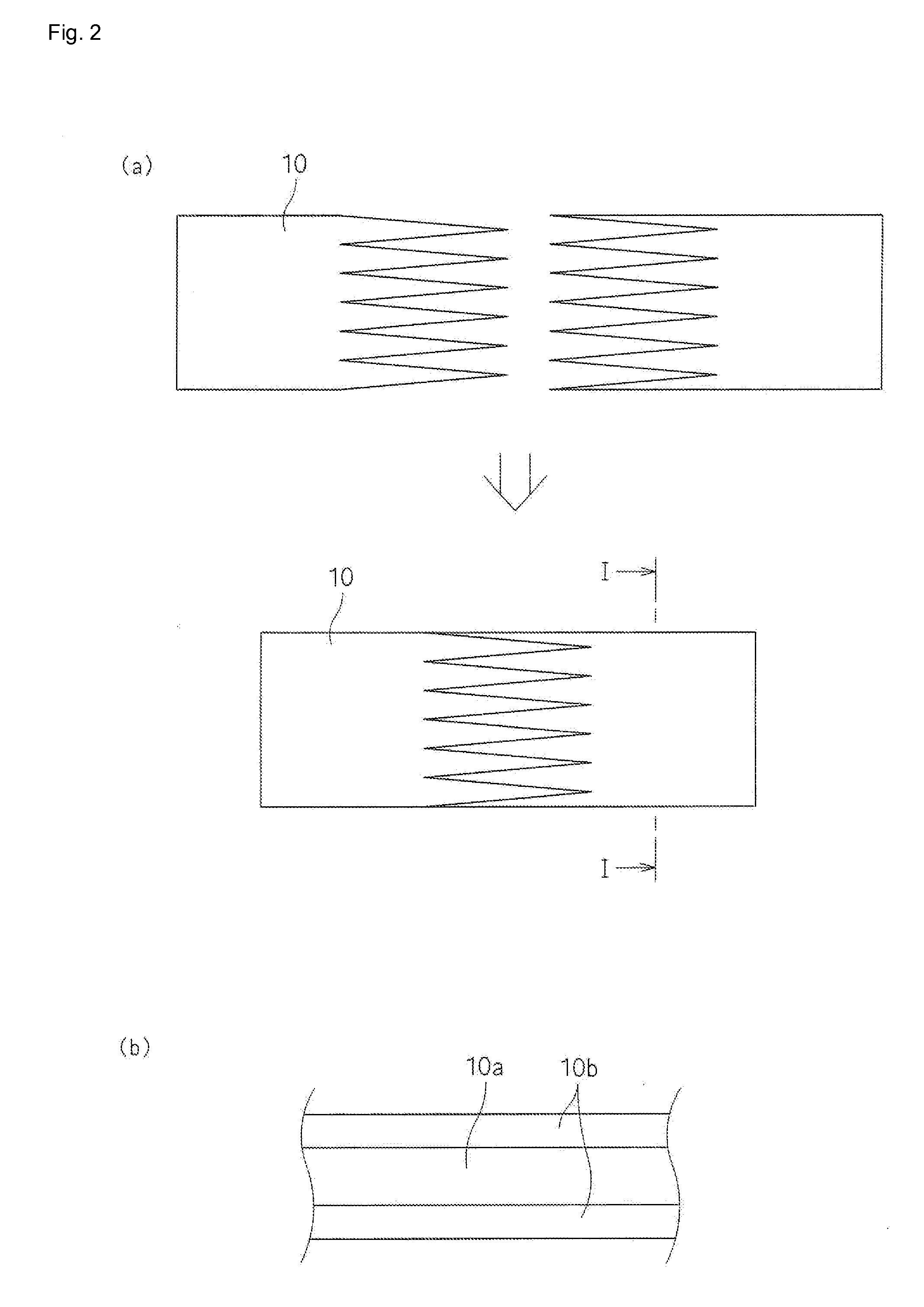Sheet cutter and belt processing tool
- Summary
- Abstract
- Description
- Claims
- Application Information
AI Technical Summary
Benefits of technology
Problems solved by technology
Method used
Image
Examples
Embodiment Construction
[0023]The belt processing tool according to an embodiment of the present invention is described below with reference to the drawings. The sheet cutter of the present invention is substantially the same as the belt processing tool, except that a cutting object thereof is a sheet.
[0024]Firstly, the belt 10 cut by the belt processing tool of the present invention is described with reference to FIGS. 2(a) and 2(b).
[0025]The belt 10 shown in FIGS. 2(a) and 2(b) is an elongated sheet with a predetermined width, specifically a belt used for a belt conveyor, a conveyor device for a printing machine, or the like. The belt 10 is made up of a core material 10a, and an outer layer 10b laminated on both surfaces of the core material 10a, as shown in FIG. 2(b). The core material 10a is formed from a canvas, nonwoven fiber, or the like. The outer layer 10b is formed from natural rubber, various types of synthetic rubbers, or alternatively thermoplastic elastomer, or thermoplastic resin such as pol...
PUM
| Property | Measurement | Unit |
|---|---|---|
| Shape | aaaaa | aaaaa |
Abstract
Description
Claims
Application Information
 Login to View More
Login to View More - R&D
- Intellectual Property
- Life Sciences
- Materials
- Tech Scout
- Unparalleled Data Quality
- Higher Quality Content
- 60% Fewer Hallucinations
Browse by: Latest US Patents, China's latest patents, Technical Efficacy Thesaurus, Application Domain, Technology Topic, Popular Technical Reports.
© 2025 PatSnap. All rights reserved.Legal|Privacy policy|Modern Slavery Act Transparency Statement|Sitemap|About US| Contact US: help@patsnap.com



